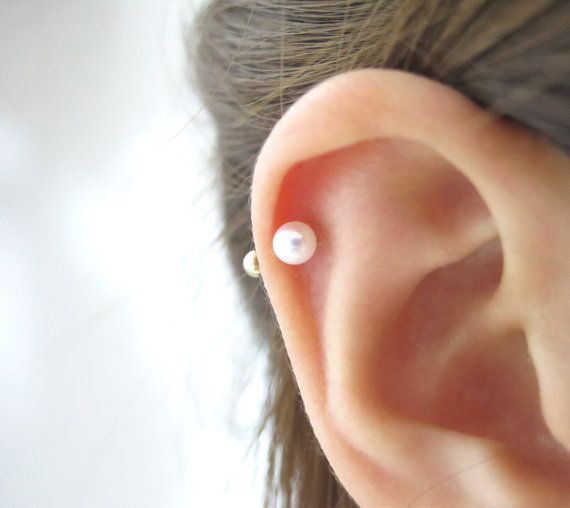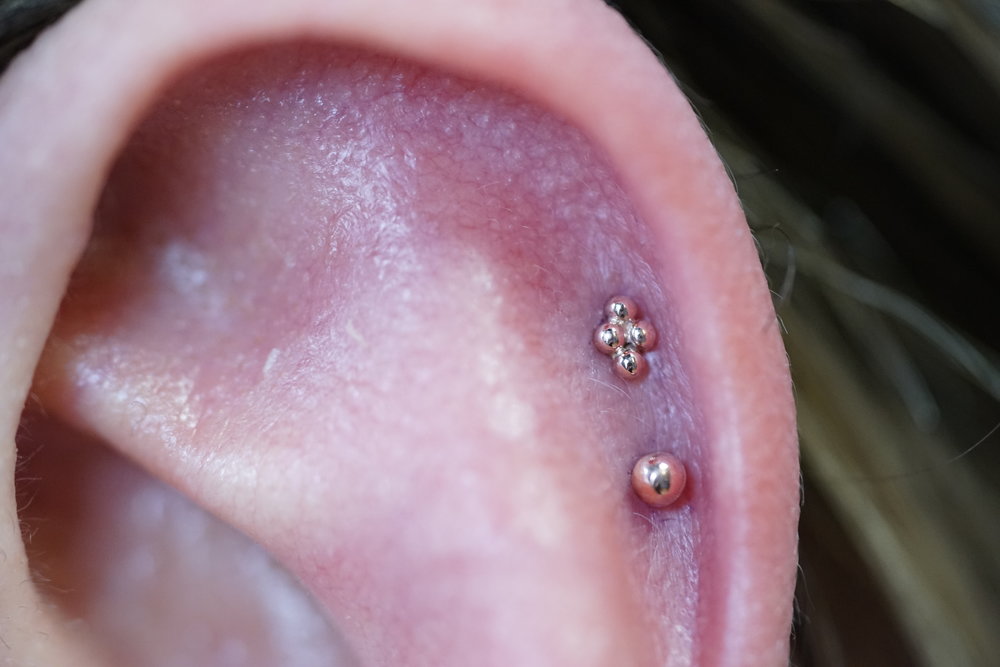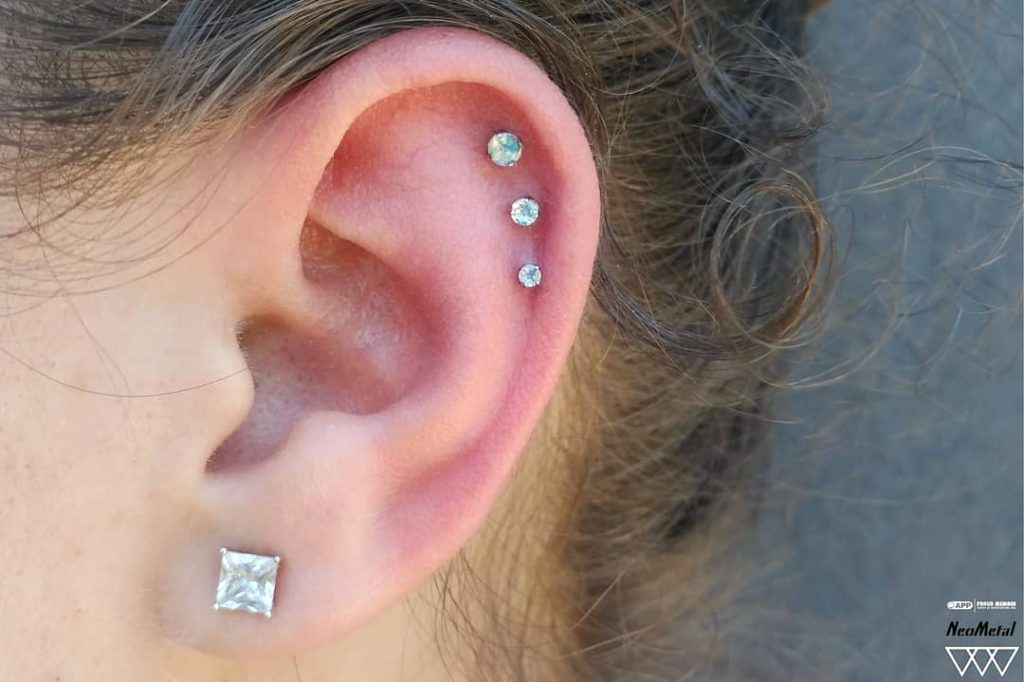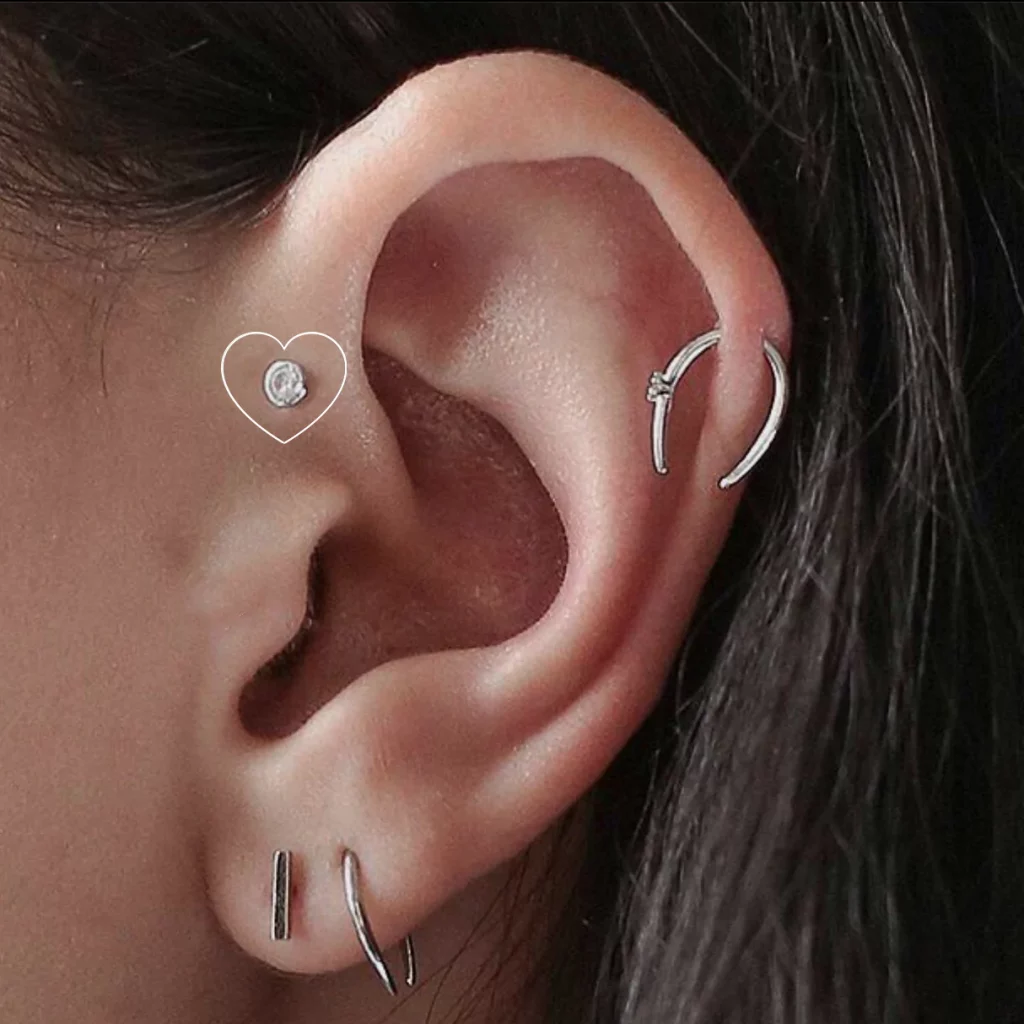Recently, the rate at which people opt for helix piercing has greatly increased. In fact, it’s gradually becoming a trend among youths.
Helix piercing (a type of piercing that is done on the ear cartilage) is way more painful, more prone to infection, and takes a longer time to heal, than traditional piercing (the piercing that is done on the ear lobes). As a result, anyone who wishes to obtain it must be properly guided, to at least know about helix piercing pain, healing time, jewelry types, and the cost of helix piercing.
Hence, this article presents a special guide on helix piercings.
What is helix piercing?
Helix piercing is the piercing or the opening of the upper ear cartilage for the sole purpose of wearing or inserting a piece of jewelry for aesthetics.
Helix piercing is usually done with a small gauge hollow piercing needle and the typical jewelry is a small-diameter captive bead ring or a stud.
Helix piercing is mainly for aesthetics as it has no medical reason. Hence, anyone that wants it can go for it.
Types of helix piercing
There are several types of helix piercings, which are in different locations on the ear.
The following are the 4 major types of helix piercing.
1. Standard single helix
2. Double helix
3. Triple helix
4. Forward helix
Standard single helix

This type of helix piercing is located at the upper outer cartilage, close to the rim of the ear.
This type of helix piercing takes 3-6 months to heal completely.
Double helix piercing

Just as the name implies, the double helix entails two piercings at the upper outer cartilage of the ear.
For this type of helix piercing, one ring is usually placed on top of the other vertically. This is more painful than standard helix piercing.
Double helix piercing is usually more painful than a single helix. It also takes 3-6 months to completely heal.
Triple helix piercing

This entails three openings in the upper outer cartilage. This is apparently more painful than the standard and double helix piercing.
Forward helix

This type of helix piercing is also known as antihelix piercing. It is done horizontally on the cartilage at the front of the ear.
This is always more painful than other types.
This heals within 4-8 months.
How to prepare for a helix piercing
The moment you have decided to have a helix piercing, you have to prepare very well and do it right since it is a bit more advanced than other types of piercing.
To have your helix piercing done,
Firstly, you have to choose a professional piercing shop.
This does not have to do with any prior experience you have with other piercings. Just ensure your helix piercing is done by a pro to avoid complications.
Improper handling of it can lead to infection, damage, or an ugly-looking piercing.
Secondly, helix piercing is best done in a sterile environment with appropriate tools, so ensure the shop you have chosen has all these before the piercing is done. Make sure the piercing is not done with a piercing gun to avoid complications.
When these are done, you can proceed to have your helix piercing done.
Thirdly, have all aftercare requirements handy.
To effectively care for your helix piercing, all the aftercare needs should be made available before the piercing to help you manage the healing process and the pre-piercing jitters.
So, you’ll need an antimicrobial soap, such as Pursan, liquid antiseptics, such as Dettol or Purit, saline solution, and a soap applicator, such as sterile gauze, to care for the piercing.
Resist the urge to take alcohol, drugs, and painkillers before the piercing.
Alcohol thins the blood and makes you prone to bleeding, so alcohol should be avoided before the piercing.
Similarly, drugs and painkillers can have adverse effects and pose dangers, so they should be strictly avoided before your piercing.
Finally, choose your helix jewelry.
Barbells, labret studs, and captive bead rings are the three most common types of jewelry for helix piercing earrings.
You may want to make your choice before proceeding to have your piercing.
Helix piercings are more prone to infections and other complications than other piercings due to less blood flow to the ear cartilage tissue, so care should be taken to avert these.
The following are ways of caring for helix piercing to reduce chances of infection and complications:
The piercing site should be kept as clean as possible. Cleaning your helix piercing very well is important to avoid scarring and infections.
The piercing site may feel swollen or sore for a few days after the piercing but will reduce within the first week. The key to tackling it is to keep the site very clean.
In the first two weeks, you can rub some methylated spirit on both sides twice a day to kill germs. Then after two weeks, you alternate alcohol with saline solution to relieve inflammation, flush out the wound, and facilitate healing.
It is better to use gauze every day in cleaning the piercing site than cotton balls since cotton fibers can get caught up in the wound or piercing and make the wound more susceptible to germs.
Also, avoid getting your piercing wet, especially in the first 24 hours as this makes room for germs to inhabit.
How do you sleep with a helix piercing? If you do sleep by your side, avoid laying on the ear to avoid friction that can lead to irritation and possible swelling.
Change your pillowcase every other day to reduce the chances of infection. Yes, your pillowcase should be changed every day so that the first bacteria won’t be introduced to the piercing site from your pillowcase.
Resist twisting or fiddling with the piercing so as not to irritate the wound and impede the healing process.
Also, touching or swapping out the ring before it is fully healed, especially with dirty or unwashed hands, will increase the risk of infection, so avoid doing this.
How long after a helix piercing can I swim? We strongly advise that you wait until you’re completely healed before diving into the swimming pool. We can not say for sure how long because the healing process varies.
Helix piercing video
Conclusion
Helix piercing is a much more advanced form of piercing than the usual piercing on the lobes of the ear.
This article has presented all that has to be done before, during, and after helix piercing to avoid infection and other complications that may arise from it.
We greatly hope that you have learned a lot about helix piercing from this article.
Tell us what you think in the comment box below.
References:
Image for double helix piercing: https://ninemoonspiercing.com/piercing-shop-nyc/helix-piercings
Tripple helix piercing image: https://ipricku.com/?portfolio=triple-helix-piercing
Forward helix image: https://www.maisonmiru.com/blogs/all-about-piercings/forward-helix-piercing-jewelry-guide
